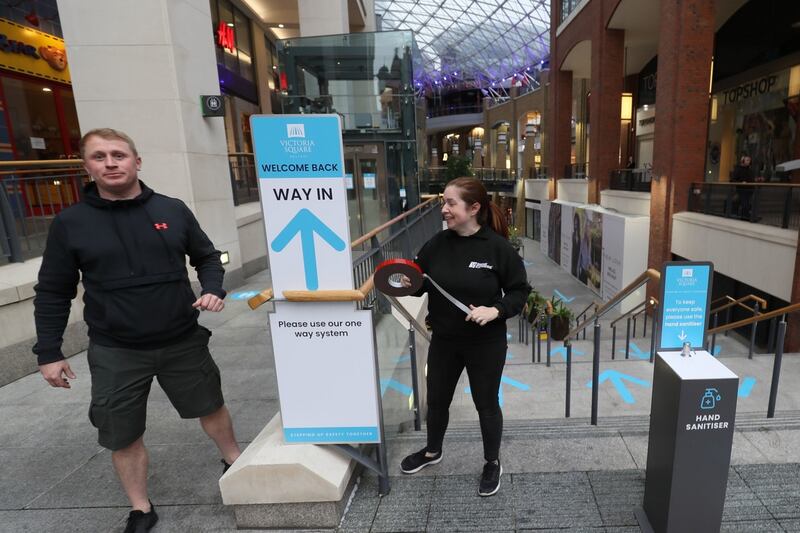The Department of Education planning document for reopening schools gives the first detailed glimpse of what classrooms may look like in September.
It makes clear that physical distancing of two or even one metre will have an “extreme” impact on students’ education and limit children’s attendance at school.
Instead, it makes a case for a different approach to physical distancing in schools than in the rest of society through the creation of “class bubbles” where no social distancing would be required.
No social distancing
Under this “optimum” scenario, class bubbles would not mix with others and physical distancing requirements would only apply in other parts of the school such as the school yard, or between staff.
There would also be staggered drop-off/pick-up times, increased hand washing/sanitising and enhanced cleaning regimes.
In addition, there would be “if unwell stay at home” regimes, along with contact-tracing regimes that can be applied in schools if a coronavirus outbreak occurs.
Immediate identification and isolation procedures would also need to be developed for schools.
It says similar regimes apply in Belgium and New Zealand, while it points to World Health Organisation (WHO) guidance which questions whether the physical distance between students can be maintained throughout the school day, given normal student behaviour.
It also cites data which suggests children are less often reported as cases than adults, and that the infection generally causes mild disease.
However, it acknowledges WHO guidance also states that the role of children in transmission remains unclear and additional data is needed.
The department says it is engaging with the Department of Health to develop guidance on infection prevention and control for school settings, which is due before the end of June.
One-metre social distancing
The planning document also examines what impact social distancing rules of one metre would have on schools.
Under this, almost all primary pupils would be attending school 2½ days a week.
At second level, it would result in some year groups attending school 50 per cent of the time and other year groups attending school at or near a full-time basis.
The planning document says this would have a “ very serious impact” on the delivery of “meaningful education”.
Students will be at home half of each week and expected to engage in “blended” learning, it states.
“The requirement to observe physical distancing imposes a direct constraint on plans to reopen schools. The physical size of our schools, and the number of individual classrooms within them, represents the most significant constraint to achieve a physical distance between students in the classroom. Teacher supply will also be a significant consideration,” the document states.
Two-metre social distancing
Under physical distancing of two metres, the document says almost all primary pupils would attend school just one day a week. At second level, most pupils would attend two days a week.
On other school days, students would need to be taught remotely.
The planning document says the impact of such a requirement on student’s education and wellbeing would be “ most extreme”.
“Engagement in face-to-face in-school provision of one day per week is detrimental to the delivery of meaningful education,” it states.
“Students will be at home four out of five days and expected to engage in blended learning.”
Challenges
Overall, the planning document notes that any physical distancing requirements will impose a direct constraint on plans to reopen schools given the “unique” circumstances, such as physical layout of Irish schools, class sizes and teacher supply problems.
“The physical size of our schools, and the number of individual classrooms within them, represents the primary constraint to achieve physical distance of one to two metres between students in the classroom and to continue to accommodate all the students within the school at the same time,” it states.
"Ireland is unique in terms of most other EU countries given its peak enrolment numbers in primary schools which are just now moving into post primary."
Overall, it says it is “not feasible, from a cost, sustainability or delivery perspective” to create additional classroom capacity (through pre-fabricated units, construction work) across each school.
While some schools could be in a position to repurpose PE halls to make some additional capacity or access local and community resources, this will “not be a panacea for the physical distancing constraints” and will at best make some “marginal improvements”.
“It is also not feasible to consider the wholesale splitting of classes and recruiting extra teachers – given that there are significant teacher supply issues currently,” it adds.















